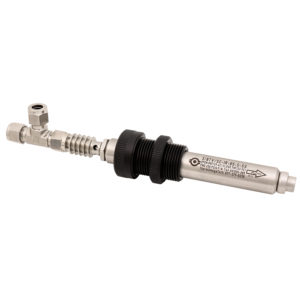
Instrument Performance Problems?
It could be the temperature inside your enclosure.
Are your enclosed instruments under the weather? It might be time to check the temperature inside the enclosure. Enclosures protect instrumentation against adverse weather conditions or physical damage, and ensure that instruments operate in the proper temperature ranges. However, enclosures may not always provide sufficient protection against temperature extremes that can affect instrument performance. High temperatures can cause some fluids to vaporize, while low temperatures can cause some lines to freeze or some products to thicken – even damaging sensitive equipment. For many instruments, the correct temperature of the instrument and sample will affect measurement accuracy. The best way to solve this problem is to equip enclosures with systems designed to maintain interior temperature within the range specified for optimal instrument performance.
Keeping warm
The most common systems used to keep enclosures warm involve steam or electricity – essentially using an outside heat source to keep equipment in the enclosure at a predetermined temperature. Electrical heating can take several forms. Typically, a radiant heater or heating cable is installed inside the enclosure. A thermostat is used to control temperature or the cable may be self-limiting. However, electrical heating has limits. In large installations, the electricity required can be ex- pensive. If combustible substances are present, the possibility of electrical sparks poses risk. And, if the cable breaks, everything beyond the break could freeze.

 Keeping your safety shower working at optimum performance is important, no matter what time of year. However, cold winter temperatures can make this especially difficult. Water can freeze in supply lines, clogging the system and shutting off flow. And because water expands as it freezes, internal pressure in the line can increase enough to break steel pipes and their associated valves and fittings. The result can be costly replacement parts, in- creased labor costs, and a shower that’s out of commission while it’s being repaired.
Keeping your safety shower working at optimum performance is important, no matter what time of year. However, cold winter temperatures can make this especially difficult. Water can freeze in supply lines, clogging the system and shutting off flow. And because water expands as it freezes, internal pressure in the line can increase enough to break steel pipes and their associated valves and fittings. The result can be costly replacement parts, in- creased labor costs, and a shower that’s out of commission while it’s being repaired.